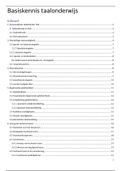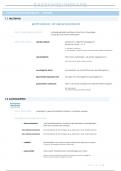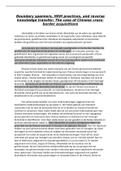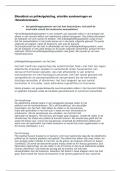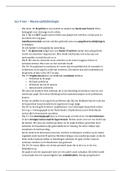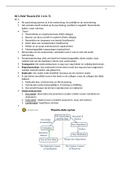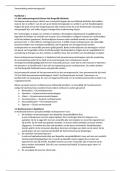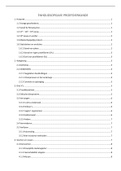Code of Conduct Obligations
Principle/ Description
Outcome/IB
Principle 4 ➢ Must act in your client’s best interests.
O1.6 ➢ You must only enter into fee agreements which are legal and suitable for the client’s
needs, and take account of the client’s best interests.
O1.13 ➢ You must provide a client with the “best possible information about the likely
overall cost of his matter, both at the outset and as the matter progresses”.
IB 1.15 ➢ You should warn about any other payments for which the client may be responsible.
IB 1.16 ➢ You should discuss:
o How the client will pay, including whether public funding may be available,
o Whether the client has insurance that might cover the fees, and
o Whether the fees may be paid by someone else such as a trade union
IB 1.17 ➢ When acting for a client under a fee arrangement governed by statute, such as a
conditional fee or a damages-based agreement, you should give the client all
relevant information relating to that arrangement.
Qualified One-Way Costs Shifting (QOCS) (p141)
QOCS ❖ In PI and Clinical Negligence claims a Defendant will generally not recover his own costs
if he successfully defends the claim (CPR 44.13-44.17).
❖ CPR 44.13(1): QOCS applies to claims for damages for:
o Personal Injuries
o Under the Fatal Accidents 1976
o Under s1(1) Law Reform (Miscellaneous Provisions) Act 1934
❖ CPR 44.14: Costs orders can be made against Claimants but ONLY to the extent that
those costs do not exceed the total damages the claimant recovers.
o This means that if a Claimant loses, they will obtain no damages, and therefore a
Defendant will not be able to recover any costs.
❖ The intention of QOCS is to make ATE insurance unnecessary for PI actions, as the
claimant will not be liable for the defendant’s costs if the claim fails.
Exceptions QOCS will not apply if, per CPR 44.15 and CPR 44.16:
❖ The claim is “fundamentally dishonest”;
o I.e. if the claimant brings a claim for a sham accident or exaggerates the extent
of their injuries (Gosling v Screwfix and another (Cambridge County Court, 29
March 2014).
❖ The Defendant wins because the claim is struck out:
o Because there are no reasonable grounds for bringing the proceedings.
o Because it is an abuse of process.
o Because the claimant’s conduct is likely to obstruct the just disposal of the
proceedings.
❖ The proceedings includes a claim which is made for the financial benefit of a person
other than the Claimant
o Eg. subrogated claims where the beneficiary is the claimant’s insurer.
,Funding Options
Legal ❖ Check whether the client has an LEI policy at the outset.
Expenses o Solicitor should send a letter asking for a copy of any motor or household
Insurance insurance policies, or any stand-alone BTE insurance policies the client or a partner
living in their household has (Sarwar v Alam [2001] EWCA Civ 1401).
❖ Check the indemnity limit.
❖ If the cover is insufficient it may be reasonable to enter into a CFA or DBA and take out
AEI instead.
Choice of Solicitor
❖ The insured is free to choose their lawyer “in any enquiry or proceedings” (Insurance
Companies (Legal Expenses Insurance) Regulations 1990).
o However insurers often take a restrictive view of the meaning of “enquiry or
proceedings”, limiting the client’s freedom of choice to when proceedings have
been issued.
CFA’s Formality Requirements:
❖ s58 and s58A of the CLSA 1990:
➢ Must be in writing.
➢ Must state the percentage success fee
➢ May not be used in family and criminal proceedings.
➢ Must be signed by the client and solicitor.
Success Fee
❖ Maximum of a 100% uplift on C’s costs.
❖ However this is capped at 25% of general damages awarded for pain, suffering and loss
of amenity and past losses less any benefits recoupable by the Compensation Recovery
Unit.
❖ Uplift cannot be recovered from the OS for CFA’s entered into after 1st April 2013 (s44
LASPO 2012).
So if the Claimant wins:
❖ D will normally pay C’s reasonable costs and disbursements under the general rule of CPR
44.2(2)(a).
❖ C will have to pay the success fee (capped at 25% of PSLA and Past Monetary Loss).
If the Claimant Loses:
❖ C will not have to pay the OS’s costs due to QOCS.
❖ C will have to pay his own costs, but there will be no success fee.
❖ C may also have to pay disbursements.
o Unless he has covered costs and disbursements by using an AEI policy.
DBA’s Formality Requirements:
❖ s58AA CLSA 1990; DBA Regulations 2013:
➢ Must be in writing.
➢ Must specify the claim or proceedings to which the agreement relates.
➢ Must specify the circumstances in which the representative’s expenses and costs
are payable.
➢ The reason for setting the amount of payment at the level agreed.
, 25% Cap:
❖ The amount of Damages recovered cannot exceed 25% of the combined sums awarded
for general damages for pain, suffering and loss of amenity (PSLA) and past pecuniary
losses.
➢ So if a Claimant, who has entered into a DBA set at 25%, is awarded £70,000 for
PSLA; £30,000 for past loss of earnings and £400,000 for future loss of earnings,
the fee payable to the solicitor will be £25,000 because the £400,000 will not be
able to be touched.
❖ So if C wins:
➢ D will normally pay C’s reasonable costs and disbursements under the general rule
of CPR 44.2(2)(a).
➢ It is possible that these will be less than the percentage of Damages which C owes
his solicitors. C will need to make up any shortfall.
❖ If C Loses:
➢ C will not have to pay the OS’s costs due to QOCS.
➢ C will have to pay her own solicitors costs. There will be no additional fee.
➢ C may also have to pay disbursements.
▪ Unless he has covered these by using an AEI policy.
Legal Aid ❖ Generally unavailable in PI and Clinical Negligence Claims EXCEPT FOR:
❖ Claims where clinical negligence causes a neurological injury to a child resulting in a
severe disability (LASPO 2012, Sch 1, Pt 1, Para 23).
➢ E.g. mismanagement of the mother’s labour results in deprivation of oxygen
resulting in a brain injury.
➢ The negligence must occur either:
▪ When the child is in the womb OR
▪ During or after birth but BEFORE 8 weeks after:
• The 37th week of pregnancy (if the child was born before the 37th
week) OR
• The day of the birth (if the child was born on or after the 37th
week).
➢ The applicant must also satisfy financial criteria.
❖ Two Levels of Funding Available:
➢ Investigative Help:
▪ Given where prospects of success are not clear and substantial work
needs to be undertaken before prospects can be determined.
▪ Will cover investigative and pre-action steps, and costs of settling
proceedings in light of counsel’s advice.
▪ Will not cover costs of trial.
➢ Full Representation
▪ Only awarded if the “cost-benefit criteria” is satisfied:
• If prospects of success = 80% or greater: damages must either be
the same as or exceed the likely costs of the case.
• If prospects of success = 60-80%: damages must be at least 2x likely
cost.
, • If prospects of success = 50-60%: damages must be at least 4x likely
cost.
• Unavailable if prospects of success are below 50%.
❖ Will cover all costs up to and including exchange of witness statements, questioning of
experts and obtaining counsel’s opinion. In the event the claimant wishes to then proceed
to a full trial, the cost-benefit criteria are reapplied.
❖ “Exceptional” cases:
➢ Where failure to provide Public Funding will result in either a breach, or a risk of a
breach of:
▪ Convention rights or
▪ EU rights relating to the provision of legal services
▪ (s10(3) LASPO 2012)
➢ Overarching question is whether the “withholding of legal aid would make the
assertion of the claim practically impossible or lead to an obvious unfairness in
proceedings” (guidance form the Lord Chancellor).
➢ High threshold.
ATE ❖ Covers the risk of the client paying the OS’s costs and disbursements and his own
Insurance disbursements.
o Does not cover C having to pay his own costs in the event he loses.
o C generally won’t have to pay the OS’s costs due to QOCS.
o AEI Policies in PI and Clinical Negligence claims are thus generally used in
disbursement heavy claims.
❖ For policies entered into after 1st April 2013, generally the ATE Premium cannot be
recovered from the OS.
❖ HOWEVER, in clinical negligence cases, the premium is recoverable if the ATE policy was
taken out to cover the costs of obtaining expert evidence on liability and causation (but
not quantum) (Costs Insurance Premiums and Clinical Negligence Proceedings (No 2)
Regulations 2013).
Trade ❖ Should be considered at the outset.
Union ❖ More likely to apply to an Employer’s Liability claim.
Funding ❖ If available will give the client the financial support of the Union and will not have to
worry about damages potentially being used to pay legal fees as with a CFA, DBA or public
funded claim.
Private
Fees
,Costs Risk Assessments (p137)
❖ When entering into a CFA or a DBA, a solicitor should undertake a risk assessment to determine
whether:
o The type of funding is appropriate.
o The level of success fee/percentage of damages the solicitor can recover.
o The riskier the claim, the more justified the solicitor will be in setting the success fee at a higher
rate
Factors
The Facts ➢ Is the client a credible witness?
➢ Are there any other witnesses who will confirm his version of events?
Liability ➢ Can the client show the existence of the relevant duty of care?
➢ Has this been breached?
Causation ➢ Does the evidence show that the injuries sustained are causally linked to the
accident?
Limitation ➢ Any potential limitation issues?
➢ Also consider delay; stale evidence?
The Potential ➢ Consider prospects of successful recovery.
Defendant ➢ Do they have insurance?
Loss and Damage ➢ Can the losses sustained be proved by way of medical and other forms of evidence?
➢ Each factor needs to be “scored” i.e. given a value to show the level of risk e.g. 1-10; percentages etc.
➢ Based on the score achieved, a risk assessment co-ordinator will then judge whether to accept the case on
a CFA/DBA or not, and the level of success fee etc.
,Road Traffic Accidents
Elements to Establish Liability
Duty of Care ❖ Established duty - Road users owe a duty of care to other road users.
❖ “Road users” are not limited to those driving vehicles, but also passengers,
pedestrians, owners of property next to the highway, and highway authorities.
Breach ❖ Standard of care is that of the “ordinary skilful/competent driver”. This is not
lowered on account of a driver’s lack of experience e.g. if they are a learner
(Nettleship v Weston [1971] 2 QB 691).
Factors Which ❖ Criminal Convictions
May Indicate a o Can be useful evidence to establish a breach of duty.
Breach of the o Must be relevant i.e. relate to how the accident was caused or to
Duty of Care quantification of damages.
▪ E.g. an offence of driving without insurance will not be relevant for
the purposes of a Civil Negligence claim.
o Check the Police Accident Report for evidence.
Potentially ❖ Vehicle Maintenance
Relevant o s40 RTA 1988: offence to use, cause or permit another to use a vehicle in a
Offences condition that involves a danger of injury.
o s41A RTA 1988: if the vehicle doesn’t comply with regulations governing the
construction and use of brakes, steering-gear or tyres. E.g. tyre tread-
depth; tyre pressures etc.
▪ E.g. WS1: The Defendant, Peter Morton, was convicted following the
accident of a breach of requirement as to tyres. This was potentially
relevant to establishing a breach of duty as Peter’s failure to clear the
highway was the alleged cause of the accident.
❖ Poor Driving
o Speeding –
▪ Driving in excess of the speed limit does not in itself prove a breach
of duty (Quinn v Scott [1965] 2 All ER 588).
▪ Driving below the speed limit does not, in itself, negate liability
(Richardson v Butcher [2010] EWHC 214 (QB)).
▪ Key question is whether the Defendant was driving at a speed
appropriate in the circumstances, taking into account:
• Weather.
• Available light.
• Road layout
• Weight of traffic.
• Parked vehicles or other obstructions.
• Warning signs.
• Likelihood of pedestrians, particularly children, crossing the
road.
o Dangerous Driving –
▪ s2 RTA 1988 – indicative that the person was driving far below the
standard of a competent and careful driver.
o Driving Without Due Care and Attention–
▪ s3 RTA 1988 – again indicative of the person driving far below the
standard of a competent and careful driver.
, ❖ Influence of Alcohol or Drugs
o Offence to attempt to drive whilst unfit to do so through drink or drugs.
o s4 RTA 1988.
o Offence to attempt to drive whilst over the prescribed limit (s5).
❖ Using a Mobile Phone
o Offence to drive whilst holding a mobile phone under s41D.
❖ Wearing of Seat Belts and Helmets
o Offence to drive without wearing a seat belt under s14.
o Offence to ride a motorbike without a helmet under s16.
o Both potentially relevant to contributory negligence.
Other Factors ❖ Breaches of the Highway Code
which May o May be relied upon in Civil Courts to establish breach of duty (s38(7) of the
Indicate Breach RTA 1988).
o Does not create a presumption of negligence; merely a potentially relevant
factor to establish breach (Powell v Phillips [1972] 3 All ER 864).
Causation ❖ “But for” causation.
o But for the Defendant’s wrongful act or omission, would the Claimant have suffered
harm in any event?
o If yes, no causation: C would have suffered the injury/condition irrespective of the
Defendant’ breach of duty.
o Barnett v Chelsea and Kensington Hospital Management Committee [1969] 1 QB
428:
▪ Three night-watchmen suffered arsenic poisoning after drinking poisoned
tea. On attending the hospital they were sent home and advised to go to
bed and call their GP if symptoms persisted. They were not examined. One
of the men, Mr Barnett, later died. However had they been treated with all
the necessary care, Mr Barnett still would have died. D’s negligence
therefore had not caused C’s death on the “but for” test.
❖ The likely arguments the Defendant will raise on this point are:
o The cause of the injury was actually the Claimant’s own negligence.
o The accident could not have caused the injuries complained of e.g. exaggerated
whiplash claims.
▪ E.g. in WS1, the Defendant alleged that the reason the Claimant had fallen
from her bike was because she was going around the corner, which was
slippery, too fast, and not because he had turned into her path/failed to
clear the carriageway.
▪ Critical point here will be medical evidence.
Loss/ ❖ Must be reasonably foreseeable.
Remoteness ❖ The Wagon Mound No. 1 [1961] AC 388: damage must be of a kind which is foreseeable i.e.
if the damage is of a kind that is foreseeable, the defendant will be liable for the full extent
of this no matter whether or not the extent of the damage is foreseeable.
Defences – ❖ s1(1) Law Reform (Contributory Negligence) Act 1945 – “Where any person suffers damage
Contributory as the result partly of his own fault” the amount of damages shall be “reduced to such
Negligence extent as the court thinks just and equitable having regard to the claimant’s share in the
responsibility”.
❖ The Defendant must show, on the balance of probabilities:
o (a) that the claimant was at fault;
o (b) that the fault was causative of the injury suffered; and
, o (c) that it would be just and equitable for the claimant’s damages to be reduced.
❖ E.g. Was the Claimant driving carelessly/dangerously?
o Too fast? What were the road conditions?
o Was the Claimant wearing their seatbelt/helmet?
❖ Where a driver/passenger fails to wear a seat belt, damages will generally be reduced by:
o 25% if the injury would not have happened at all
o 15% where the injuries would have been less severe
o (Froom v Butcher [1976] QB 286).
❖ Where a motorcyclist fails to wear a crash helmet, damages will be generally be reduced
by:
o 15% (O’Connell v Jackson [1972] 1 QB 270)
o Where the helmet’s chin strap is not fastened, by 10% (Capps v Miller [1989] 1 WLR
839).
❖ Where a passenger allows himself to be carried in a vehicle when he knows the driver is
drunk and should not be driving, damages will be reduced by
o 20% (Owens v Brimmel [1977] QB 859).
,Claims Against the Highway Authority
❖ Local highway authority will normally be the local council.
Potential Causes ❖ Breach of Statutory Duty of s41(1) of the Highway Act 1980:
of Action Against o A Highway Authority has a duty to maintain (includes a duty to repair) any
the Highway highway which is maintainable at the public expense.
Authority o Duty is non-delegable:
▪ Therefore the Highway Authority will be liable even where the
condition of the road is caused by a third party e.g. a contractor.
▪ However in such circumstances it is possible that a Defence under
s58 HA 1980 will be successful.
❖ Negligence under Common Law:
o The Highway Authority has a similar duty to maintain highways under
common law (Dabinett v Somerset County Council [2006] LTL 20/4/200).
Scope of the ❖ Not confined to the surface; also obliged to keep drains in good repair (Department
Duty of Transport, Environment and the Regions v Mott Macdonald Ltd & Others [2006]
EWCA Civ 1089).
❖ Includes:
o Removal of Obstructions of the Highway:
▪ s150: requires authorities to remove any obstruction of the highway
resulting from ‘accumulation of snow or from the falling down of
banks on the side of the highway, or from any other cause’.
o Removal of snow and ice:
o s41(1A): requires highway authorities to ensure ‘so far as is reasonably
practicable, that safe passage along a highway is not endangered by snow
and ice’.
Breach of Duty Claimant must prove:
❖ That the condition of the highway made it a foreseeable danger to road users; and
❖ The condition of the highway was due to the failure of the highways authority to
maintain it; and
❖ That the damage was caused by the dangerous condition of the highway.
❖ Reference should be made to:
o Well-maintained Highways – Code of Practice for Highway Maintenance
Management –
▪ Requires Highway Authorities to carry out safety inspections to
identify defects; were these done? What was their frequency? What
was done in response to noted risks?
o Safety at Street Works and Road Works - A Code of Practice (2013)
▪ Deals with best practice for roadworks e.g. appropriate distance of
warning signs etc.).
Defence ❖ s58 HA 1980:
o Highway authority may, in its defence, prove that it had taken such care as
was reasonably required in the circumstances to ensure that the highway
was not dangerous for traffic.
, ❖ The court will have regard to the following factors in assessing whether the defence
is made out:
o (a) The character of the highway, and the traffic which was reasonably to be
expected to use it;
o (b) the standard of maintenance appropriate for a highway of that
character and used by such traffic;
o (c) the state of repair in which a reasonable person would have expected to
find the highway;
o (d) whether the highway authority knew, or could reasonably have been
expected to know, that the condition of the part of the highway to which
the action relates was likely to cause danger to users of the highway;
o (e) where the highway authority could not reasonably have been expected
to repair that part of the highway before the cause of action arose, what
warning notices of its condition had been displayed.
❖ Essentially this can provide a defence where an accident occurs shortly after a
defect in the highway arises.

